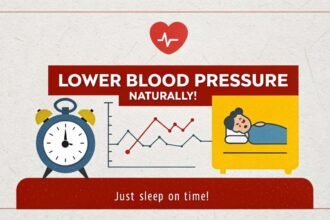Pain relievers, or pain-relieving medications, are used to make you feel better when you have pain. They basically block pain signals from reaching your brain, so you don’t feel as much pain. But how do these drugs know where to do their job?
How do they find where the pain is coming from and help that spot? This article highlights the ways different pain relief medications work to make a specific area feel better.
How Pain Signals Work in the Body
- Pain starts with activation of pain receptors (nociceptors) at site of injury
- Nociceptors send pain signals through neurons to spinal cord and up to brain
- Brain interprets signals and localizes source/location of pain in the body
- Pain sensations continue until injury heals or pain signals are blocked
How Common Painkillers Work
Acetaminophen and NSAIDs
- Common painkillers like acetaminophen, ibuprofen and aspirin are anti-inflammatory
- They inhibit COX enzymes involved in inflammation and pain signal production
- Rather than targeting specific pain locations, they reduce pain signal production overall
- Have effects on pain receptors and neurons throughout the body
- Better for general pain relief rather than localization
Opioids
- Opioids like codeine, oxycodone and hydrocodone bind to opioid receptors
- These receptors located along pain pathways in brain, spinal cord and other nerves
- By activating receptors, opioids block transmission of signals up the nerve fibers
- This provides more localized pain relief compared to NSAIDs
- But the exact localization depends on type of opioid and dose
Anesthetics
- Local anesthetics like lidocaine completely block nerve signaling
- They inhibit voltage-gated sodium channels involved in nerve signal propagation
- Administered locally via injection/infusion directly around nerves from injury site
- As they can’t pass extensively through blood, provide targeted, localized effect
- The nerve block wears off over time as anesthetic gets metabolized
Basically, acetaminophen and NSAIDs help with general pain relief by reducing inflammation and pain signals. Opioids can specifically target and block pain signals in nerves. Local anesthetics are best at targeting pain because they directly disrupt the affected nerves’ ability to transmit signals.
How Painkillers Cross the Blood-Brain Barrier
The blood vessels that supply blood to the brain and spinal cord contain something called the blood-brain barrier (BBB) which contains tight junctions that control what goes in and out of the central nervous system (CNS). For a painkiller to actually work on pain in the CNS, it must be able to get through the BBB.
Lipophilic chemicals such as opioids can enter the CNS directly through the lipid membranes of the BBB. Pain-relieving medications such as gabapentin and pregabalin target specific receptors. But larger molecules struggle to move, so their pain-relieving power is mainly concentrated in one area.
Once painkillers reach the CNS, they begin to mess with various receptors and pathways that deal with pain signals from nerves to pain sites. They don’t know exactly where the pain started, but they can stop all the signals from going through because of their wide-ranging effects.
Advanced Targeted Analgesia
While most common systemic analgesics don’t have perfect information of pain source, exciting new approaches leverage this for better accuracy:
- Encapsulating drugs in nanoparticles tagged to home in to injury sites
- Using carriers sensitive to inflammatory proteins found only near injury sites
- Activating prodrugs by enzymatic processes related to pain and inflammation
- Using patient genetics to tailor specific analgesics best suited to their pain pathways
- Delivering analgesic genes directly via vectors that home in on overactive pain nerves
So in essence, while painkillers may not start off knowing exactly where the pain is, researchers are exploring innovative methods to provide that guiding capability resulting in more precise, targeted analgesia.
The Bottom Line
When you first think about it, it seems strange how a painkiller can know where to go in your body to work. But different types of pain relievers have found different ways to relieve pain, either in just one spot or all over.
We are getting better at understanding how pain works and creating treatments that are tailored to what is needed. It’s great that we’re using new technology to target pain signals in specific areas, while still keeping us feeling things as normal everywhere else.











